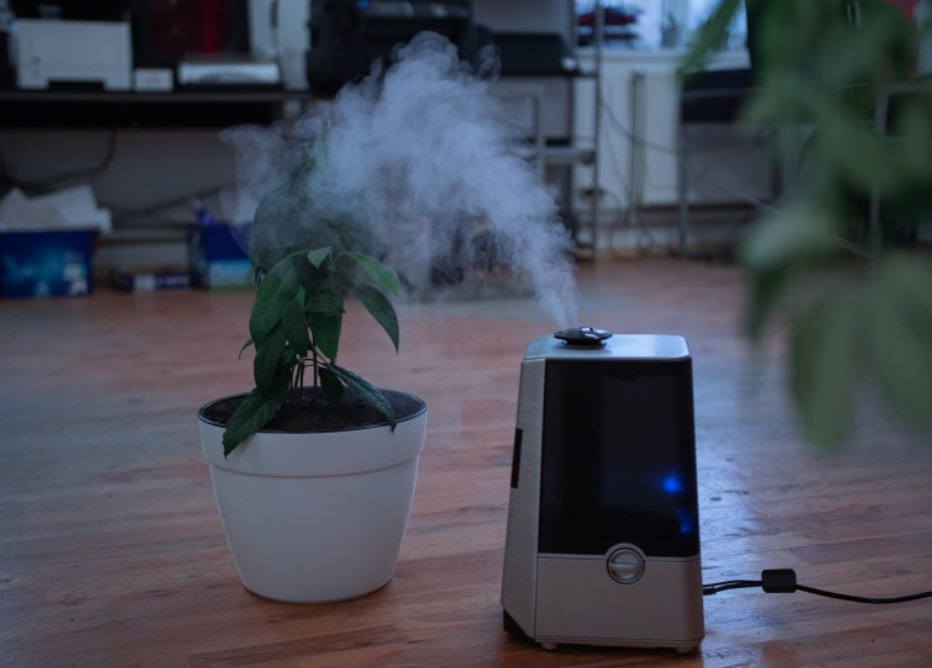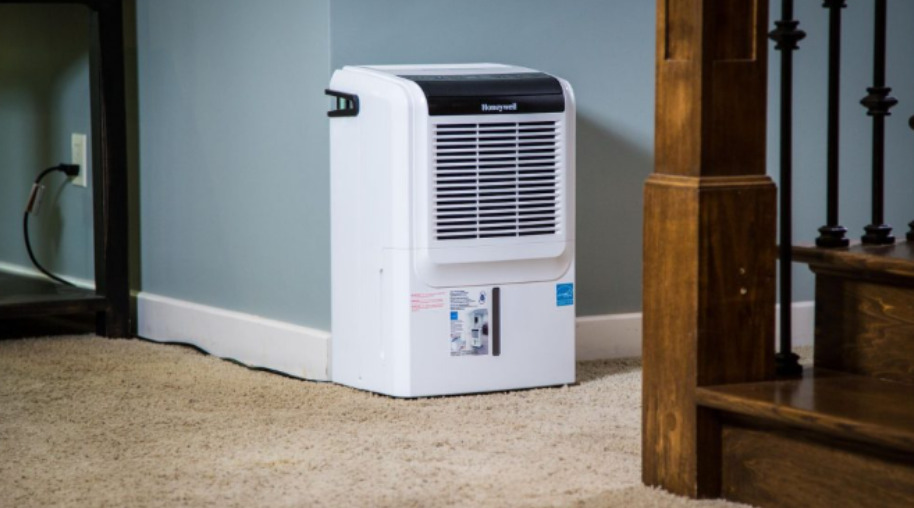Guest Post by: Berita Fregoso
The optimal humidity level range for an indoor place or a home is 35%-50%. More humidity than this range is harmful to the home and the people living in it. Maintaining humidity levels in an indoor house depends on the owner’s actions.
A homeowner can take several steps to dehumidify his house. Adopting natural methods like rock salt or baking soda or using modern devices like air conditioners or dehumidifiers in the home, you can opt for your suitable option.
In addition to being uncomfortable, humidity can encourage the growth of mold or fungus. You may minimize humidity in your home in various ways after reading this article.
How To Know If The Home Needs To Dehumidify?

First and foremost, the homeowner needs to identify whether or not his home needs to dehumidify. A humidity monitor or a hygrometer is the best way to measure the humidity level.
An appliance called dehumidifiers is available for the homeowners, made to dehumidify the air. The author of Hvac Buster shared why and how dehumidifiers work, and we will discuss dehumidifiers later in this article.
If you don’t have any humidity monitor, then some signs around the house also warn you about the need for dehumidification.
Condensation On Windows
Warm, humid air contains water that condenses due to cold surfaces, such as window glass and walls that are insufficiently insulated.
Excessive humidity levels cause condensation building up in the windows of the home. If you frequently observe this, there’s a high possibility that your home has a high humidity issue.
Water Stains And Rust
Water stains may emerge on your home wall or ceilings. Rust may begin to form on metal furniture.
Damage to the wood over time can cause warping, cracking, and even splitting of the support beams. All because your home has an excessive amount of humidity in the air.
Mold Infestation And Growth
If the air is very humid, it will cause mold infestation and growth in the house. Wet and clammy conditions encourage the growth of dust mites, mold, and mildew.
You have moisture issues if you notice mold growth on the walls, or other parts of the house.
Sticky And Uncomfortable Surrounding
Because of the high humidity, sweat doesn’t immediately evaporate, which prevents your body from cooling down.
So, whichever season it is, if your home air has a higher humidity level, it will make you feel uncomfortable and sticky.
Poor Ventilation System
Humidity issues might arise in homes with inadequate ventilation, and your home will retain extra moisture if it is well-insulated.
If your home has poor ventilation, then most likely, the air humidity level will get higher. You will encounter higher than normal humidity levels in rooms with inadequate or no ventilation (especially areas like kitchen, bathrooms, bathtubs, etc.)
Musty Smells
If the weather is very humid, musty smells may emerge. The indoor mold that is actively growing emits spores and toxins, which can have a musty smell.
Continuous use of a humidifier
Many homeowners use humidifiers to increase moisture in the air. But continuously using the humidifier and not shutting it down can cause an increase in the humidity level.
If you feel stuffy and uncomfortable in your home, then check if it’s due to the frequent running of the humidifier or not.
How To Dehumidify A Home?
Having dehumidifiers are the best option to dehumidify a home. But you can adopt some other easy and natural ways. Making some changes in your home is also helpful in this regard. Among the several methods discussed below, you need to decide which method you want to adopt as a homeowner.
Natural Methods To Dehumidify Your Home
If you need to dehumidify your home but don’t want to spend much, then the natural methods are for you.
Among natural methods, you can use moisture-absorbing products like rock salt, DampRid/Dri-Z-Air, and baking soda.
1. Rock Salt
Rock salt is an effective moisture absorber. Rock salt works incredibly well to remove moisture and functions like a humidifier by drawing and storing water. It’s natural, affordable, and simple to work with.
Have some portion of rock salt or one whole bag. Take two buckets and try to make sure each bucket is 5 gallons in weight. Make a few holes in one of the buckets by using a drill. Drill some in the bottom. Put this bucket inside the other undrilled one and leave some space between.
Add rock salt to the bucket at the top. Place them in places where you feel high humidity problems. Water vapor will be stored in the bottom bucket as the rock salt draws moisture out of the air. Check once in a while to empty the water held in the bucket.
2. DampRid/ Dri-Z-Air
These moisture-absorbing products are easily available in hardware and home repair stores. Come in big packets that you can either hang in any place or fill in any container and place where you want to place it.
Calcium chloride is the substance in the crystals. Extra humidity in the air is absorbed by the crystals. The crystals become harder and solidify as they take in the moisture.
3. Baking Soda
Baking soda works well in removing moisture. It’s a cheap, natural, but very effective way to dehumidify small places in your home. You don’t need to invest much.
You may just buy some and put it in a bowl. Then place the bowl in the smaller places of your home with a lot of humidity. Keep checking regularly and replace it whenever it is needed.
In larger spaces, rock salt works better, but baking soda works just as well at removing moisture from the air in smaller rooms or portions of a house.
4. Air Circulation
Open the windows of your home. It will enable air circulation, and the outdoor air will balance the humid indoor air. Proper air circulation helps in dehumidifying your home.
5. Place Your Indoor Plants Outside.
Although we’ve always known indoor plants are great for improving indoor air quality, having many indoor plants inside can increase humidity levels. Especially when you frequently water them.
So, if you feel an increase in your home’s usual humidity level, shift the indoor plants outside.
Using Devices To Dehumidify Your Home

You may dehumidify your home with a single button press if you opt for devices rather than natural methods. AC, space heater/ heat pump, dehumidifier, ventilation fans, etc., control moisture from the air. These devices are more expensive than the natural methods.
Air Conditioner/ Space Heater
If you can’t open the windows due to any inconvenience and have an AC, use it to dehumidify your home. Turn the AC on and press Auto.
It will pull excess moisture from the air and cool down the place. While cooling the air, air conditioners remove humidity from it. The air conditioner will still dehumidify the air even if it isn’t set to a very low temperature.
If running AC is not possible or it is too cold to turn on, you can use a space heater or your fireplace.
Dehumidifier
A dehumidifier is a device that pulls out and removes excess moisture from the air. Dehumidifiers are essential for enhancing your home’s overall indoor air quality, in addition to the excess humidity.
Dehumidifiers also balance the increased humidity level caused by the humidifiers in the home. It is taken as a perfect pair for the humidifier.
Dehumidifiers are portable in size and easy to move from one room to another. You can choose the perfect size and requirements according to your needs. They come in different sizes, both for large and small places.
Consider issues like capacity and size, portability, and energy efficiency when buying a dehumidifier.
Ventilation Fans
Install ventilation/exhaust fans to extract the indoor air from the inside to the outside. Poor ventilation in the home is a strong reason behind excess humidity.
Arrange proper ventilation systems in places with higher humidity levels such as the kitchen, bathroom, etc. Ventilation and exhaust fans reduce moisture from the indoor air.
Final Thoughts
Dehumidification lowers humidity, which immediately raises comfort levels. Dust mites, which might be the reason for wheezing, can be removed. The growth of molds and bacteria can be eliminated once the home gets dehumidified,
The air will feel lighter, which will immediately reduce your feelings of fatigue, clamminess, and sweat. All family members benefit from dehumidification since it keeps the indoor air at a healthy level. It makes it easier for everyone to breathe.



